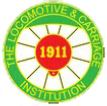Archive Section




Friday 10th May
© Photos & Text Tom Chaffin
visi

Travel from Barrow-

We alighted at Ravenglass, as our train departed, the 2C50 11.07 Carlisle to Lancaster arrived on the opposite platform, formed of 156 425, still with conventional destination blinds rather than the LED display on 156 483. Northern has 47 Class 156s in total.
It was a short walk from the Ravenglass National Rail station to the Ravenglass & Eskdale Railway station. After a tour round the workshop, our guide gave us a tour of the museum.
This is 0-

W.J. Bassett – Lowke engines Little Giant on the left and Synolda on the right. Little Giant was the first 15inch gauge Atlantic designed by Henry Greenly and built by Bassett-





Quarryman, built in 1927.
It was originally built by Muir-
No 1 Bunny -
We alighted at Ravenglass, as our train departed, the 2C50 11.07 Carlisle to Lancaster arrived on the opposite platform, formed of 156 425, still with
We alighted at Ravenglass, as our train departed, the 2C50 11.07 Carlisle to Lancaster arrived on the opposite platform, formed of 156 425, still with
We alighted at Ravenglass, as our train departed, the 2C50 11.07 Carlisle to Lancaster arrived on the opposite platform, formed of 156 425, still with


We alighted at Ravenglass, as our train departed, the 2C50 11.07 Carlisle to Lancaster arrived on the opposite platform, formed of 156 425, still with

We alighted at Ravenglass, as our train departed, the 2C50 11.07 Carlisle to Lancaster arrived on the opposite platform, formed of 156 425, still with

We alighted at Ravenglass, as our train departed, the 2C50 11.07 Carlisle to Lancaster arrived on the opposite platform, formed of 156 425, still with
This page is under construction